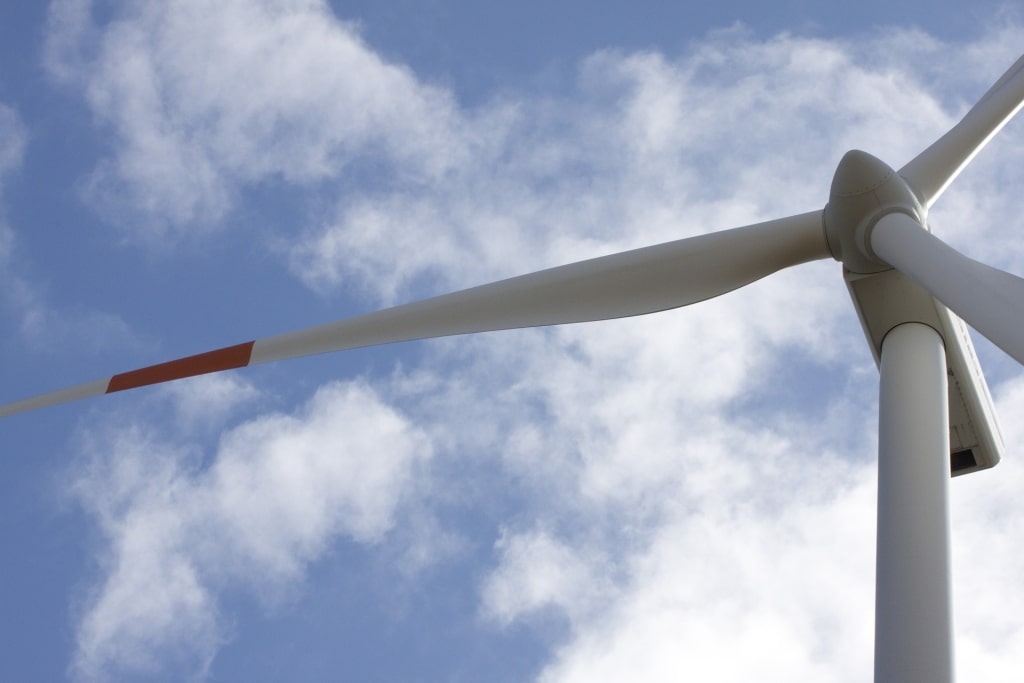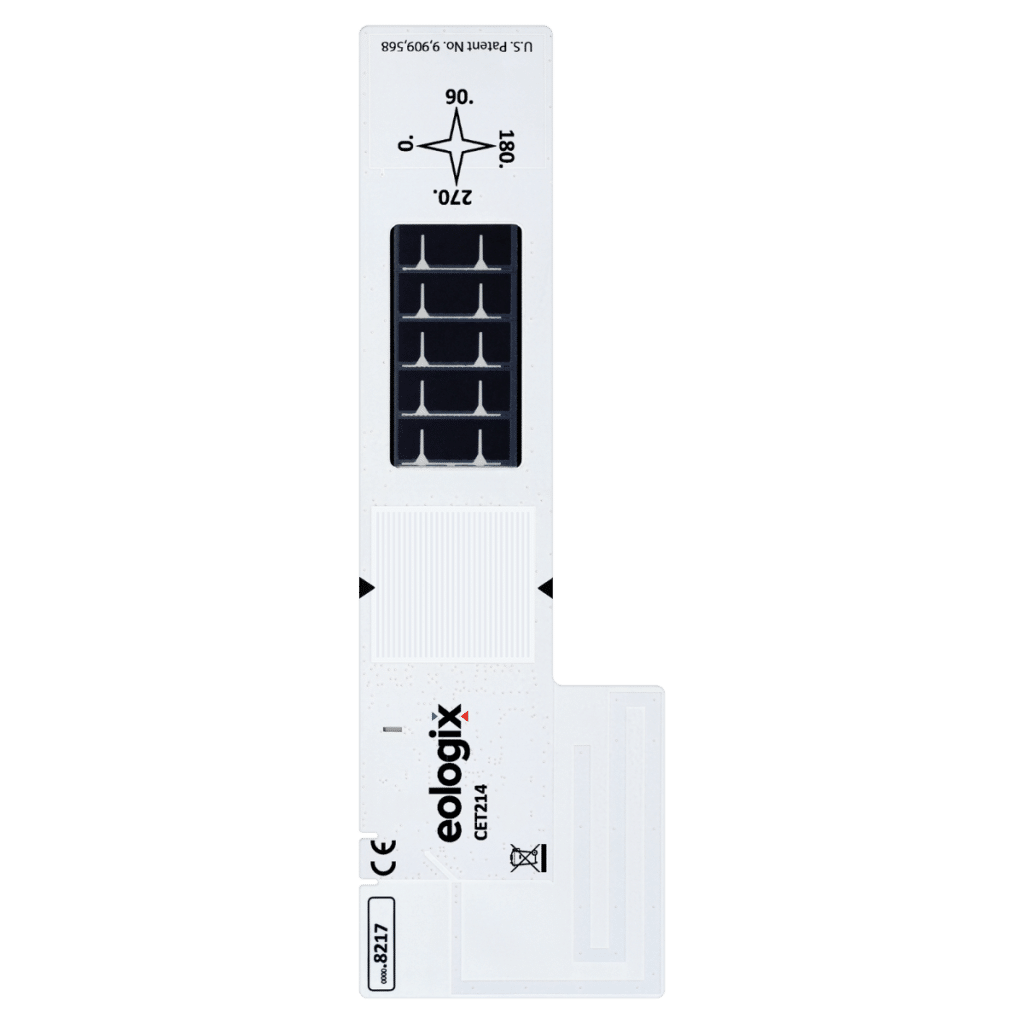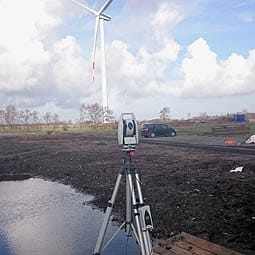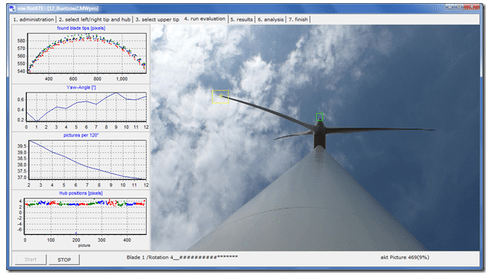TECHNOLOGY | 9 MIN TO READ
Exploring measurement methods for pitch angle deviations at wind turbines
Wind turbines have become a crucial source of renewable energy worldwide, harnessing the power of the wind to generate electricity. The efficient operation of wind turbines is essential for maximizing energy production and ensuring the longevity of these complex machines. One critical aspect affecting their performance are aerodynamical imbalances caused by pitch or twist angle deviations between the the rotor blades. Accurate measurement of these relative pitch angles are vital for maintaining optimal efficiency and minimizing maintenance costs.
In this blog post, we’ll delve into the advantages and disadvantages of different measurement methods for relative pitch angles at wind turbines.
Would you like to learn more about the on-blade system for continuous relative pitch angle measurement? Arrange your personal demo with our sales team.

Different possibilities for measuring the pitch angle deviations
There are various systems for measuring the relative and/or absolute pitch angle on the market.
Most of all you can find:
- Sensors on the blade surface (like eologix:align)
- Laser measurement
- Photogrammetry
- Sensors inside the rotor blade
These technical methods differ fundamentally in their approach and thus also in their accuracy. Further advantages and disadvantages of the different approaches are discussed below.
Advantages and disadvantages at a glance
Whether it is a continuously monitoring system, a temporary used system, a ground-based system or one with access to the wind turbine, each offers different ways to measure relative pitch angles, to explore the pitch angle deviatons and has different advantages and disadvantages.
Read more about eologix:align for continuous measurement of the pitch angle deviations of your turbine here.
On-blade sensor system on rotor blade
With the on-blade sensor system, the sensors are mounted directly on the rotor blade surface. From there, the pitch angles are measured based on inertial data. After installation, there is no need for manual intervention on site.
Advantages:
- continuous measurement & automatic warning
- results updated continuously
- historical data visible in the dashboard
- measurement method independent of location and weather conditions
- possible at every wind turbine in every life cycle
- pitch angle deviations are displayed versus rotation frequency
- measuring accuracy of ±0. 3°
- comparison with measurement data from the SCADA system possible
Disadvantages:
- higher acquisition costs

Laser-based systems
Laser-based alignment systems use laser technology to measure pitch angle deviations. As the wind turbine rotates, a laser beam measures the distances to each blade surface at specific rotor blade radii. The pitch angle deviations are calculated by comparing the distance measurements.
Advantages:
- suitable for various types of wind turbines
- suitable for periodic alignment checks
Disadvantages:
- “one-time” measurement in a certain operating condition of the wind turbine
- Limited to short-range measurements
- Sensitive to environmental conditions (e.g., dust, fog)
- Accuracy depending on geometry, vibration and wind speed

Photogrammetry
Photogrammetry can be used to measure the relative blade angle of a wind turbine by analyzing images or photographs of the turbine’s blades from multiple viewpoints.
Advantages:
- location-independent measurement method, can also be used at forest locations
Disadvantages:
- “one-time” measurement in an operating state of the wind turbine
- pitch is not measured by rotation frequency
- difficult to make qualitative statements due to inaccuracy
- Environmental factors – photogrammetry can be sensitive to environmental conditions such as fog, rain, or poor lighting. Adverse weather can hinder data collection and accuracy

Sensors inside the rotor blade
Most conventional CMS systems installed inside the blade can be used for a rough detection of rotor imbalance.
Advantages:
- continuous measurement & automatic warning
- measurement by means of acceleration sensors
Disadvantages:
- detects only an indication
- after overwriting the alarm or warning threshold of the CMS system, a ground-based blade measurement is required. With the results, a statement can be made about the size of the relevant pitch angle errors.
By continuously monitoring the relative pitch angle, you can detect the first anomalies in the operating behavior as early as possible. In this way, you prevent damage and consequential costs and thus extend the service life of your wind turbine.
Accurate measurement of relative pitch angle deviations is essential for optimizing wind turbine performance. Each measurement method comes with its own set of advantages and disadvantages, and the choice depends on factors such as budget, precision requirements, and environmental conditions. While traditional methods like ground based measurements may be cost-effective for occasional checks, more advanced technologies like on-blade sensor technology offer greater accuracy and the ability to monitor wind turbines continuously.
In the ever-evolving field of renewable energy, the choice of measurement method should align with the goals of maximizing energy production, reducing downtime, and ensuring the sustainability of wind turbine operations. Ultimately, a combination of these methods may be the most effective approach, allowing for periodic assessments and real-time monitoring to maintain optimal performance and prolong the lifespan of wind turbines.





